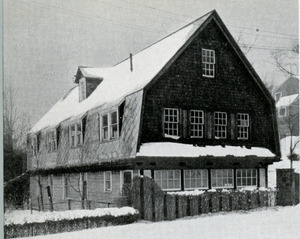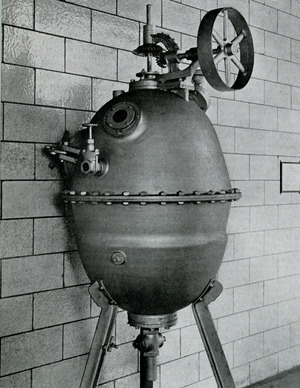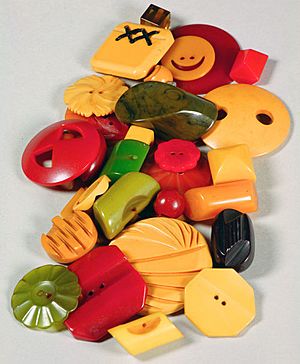Leo Baekeland facts for kids
Quick facts for kids
Leo Baekeland
|
|
|---|---|
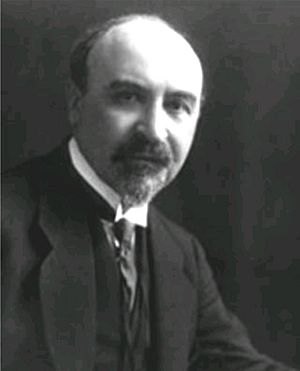
Baekeland in 1916
|
|
| Born |
Leo Hendrik Baekeland
November 14, 1863 Ghent, Belgium
|
| Died | February 23, 1944 (aged 80) Beacon, New York, U.S.
|
| Education | University of Ghent |
| Occupation | Chemist, inventor |
| Known for | Plastics research, Bakelite, Novolac, Velox photographic paper |
| Spouse(s) |
Céline Swarts
(m. 1889) |
| Children | Jenny Nina Rose Baekeland (October 9, 1890 – 1895) George Washington Baekeland (February 8, 1895 – January 31, 1966) Nina Baekenland (July 22, 1896 – May 19, 1975) |
| Awards | John Scott Medal (1910) William H. Nichols Medal (1910) Willard Gibbs Award (1913) Perkin Medal (1916) Franklin Medal (1940) |
| Signature | |
Leo Hendrik Baekeland (born November 14, 1863, died February 23, 1944) was a clever chemist from Belgium. He is famous for inventing Velox photographic paper in 1893 and Bakelite plastic in 1907. People called him "The Father of the Plastics Industry" because Bakelite was the first truly useful plastic. It was cheap, didn't burn easily, and could be used for many things. This invention started the whole modern plastics world!
Contents
Early Life and Education
Leo Baekeland was born in Ghent, Belgium, on November 14, 1863. His father, Charles Baekeland, was a cobbler, and his mother, Rosalia Merchie, was a house maid.
Leo was a very bright student. He graduated with high honors from the Ghent Municipal Technical School. He even won a special scholarship from the City of Ghent to study chemistry at Ghent University. He started university in 1880 and earned his PhD with top honors when he was only 21 years old. After teaching for a short time in Bruges, he became an associate professor of chemistry at Ghent University in 1889.
Family Life
Baekeland married Céline Swarts on August 8, 1889. They had two children, George Washington Baekeland and Nina Baekeland. Their first child, Jenny Nina Rose, died young.
A Career Full of Inventions
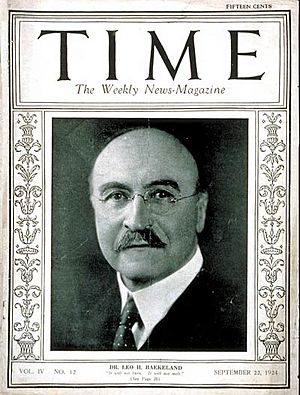
In 1889, Leo and Céline traveled to England and the United States. In New York City, he met Professor Charles F. Chandler from Columbia University. Professor Chandler encouraged Baekeland to stay in the U.S.
Baekeland had already invented a way to develop photographic plates using water, which he patented in Belgium in 1887. This idea caught the attention of Richard Anthony, who offered him a job at his photographic company.
Inventing Velox Paper
After working for the Anthony company for two years, Baekeland started his own business in 1891. He wanted to create a special photographic paper that would let people print enlarged photos using artificial light. After two years of hard work, he perfected this paper and called it "Velox." It was the first successful photographic paper sold to the public.
Because of a tough economy in the U.S., Baekeland teamed up with Leonard Jacobi. They started the Nepera Chemical Company in New York. In 1899, they sold their company to George Eastman, who owned Eastman Kodak Co., for a large sum of money. This sale made Baekeland quite wealthy.
With some of his money, Baekeland bought a house called "Snug Rock" in Yonkers, New York. He built his own amazing laboratory there. As part of the sale of Nepera, he agreed not to work on photography for 20 years. So, he needed to find a new area for his inventions.
Helping with Chemical Processes
Baekeland also helped develop a better way to produce chemicals like chlorine and lye. He improved a special cell used in the chloralkali process. His improvements were very important for the Hooker Chemical Company to build one of the world's biggest chemical plants at Niagara Falls, New York.
The Invention of Bakelite
After his success with Velox, Baekeland looked for another big challenge in chemistry. He wanted to find a problem that could lead to quick and useful results. He decided to work on synthetic resins, which are like artificial tree sap. His main goal was to make money from his inventions.
Chemists in the 1900s knew that many natural materials like wood and cotton were made of long chains called polymers. Other scientists had tried mixing chemicals like phenol and formaldehyde before, but they ended up with a useless "black guck."
Developing a New Plastic
Baekeland started studying how phenol and formaldehyde reacted. He worked very carefully, controlling the heat, pressure, and amounts of materials. His first idea was to create a fake version of shellac, a natural resin used for varnishes. He made a soluble resin called "Novolak," but it wasn't as good as he hoped. However, Novolak is still used today, for example, in making computer chips.
Baekeland kept trying different combinations of phenol and formaldehyde. He was excited about making a material that could be molded into shapes. By carefully controlling the pressure and temperature, he finally created his amazing hard, moldable plastic: Bakelite.
Bakelite was made from phenol (also known as carbolic acid) and formaldehyde. When making Bakelite products, the resin was often mixed with materials like wood or asbestos before being pressed into its final shape. Baekeland filed for a patent for his process in July 1907, and it was approved in December 1909. He officially announced his invention in February 1909.
In 1917, Baekeland became a special professor at Columbia University. He became a U.S. citizen in 1919. In 1922, his company, General Bakelite Co., merged with two other companies to form the Bakelite Corporation.
The invention of Bakelite started the "age of plastics." Bakelite was the first plastic that kept its shape after being heated. It was used for radios, telephones, and electrical insulators because it was great at blocking electricity and resisting heat. Soon, Bakelite was used in almost every industry.
Baekeland received many awards for his work, including the Perkin Medal in 1916 and the Franklin Medal in 1940. He was honored in the National Inventors Hall of Fame in 1978 and the Plastics Hall of Fame in 1974.
By the time Baekeland died in 1944, about 175,000 tons of Bakelite were made each year. It was used in over 15,000 different products! He held more than 100 patents for his many inventions.
Later Life and Death
As he got older, Baekeland became more private. He sold the General Bakelite Company to Union Carbide in 1939 and retired. He died from a stroke in a sanatorium in Beacon, New York, in 1944. Leo Baekeland is buried in Sleepy Hollow Cemetery in Sleepy Hollow, New York.
Children
- Jenny Nina Rose Baekeland (October 9, 1890 – 1895)
- George Washington Baekeland (February 8, 1895 – January 31, 1966)
- Nina Baekeland (July 22, 1896 – May 19, 1975)
See also
 In Spanish: Leo Baekeland para niños
In Spanish: Leo Baekeland para niños


